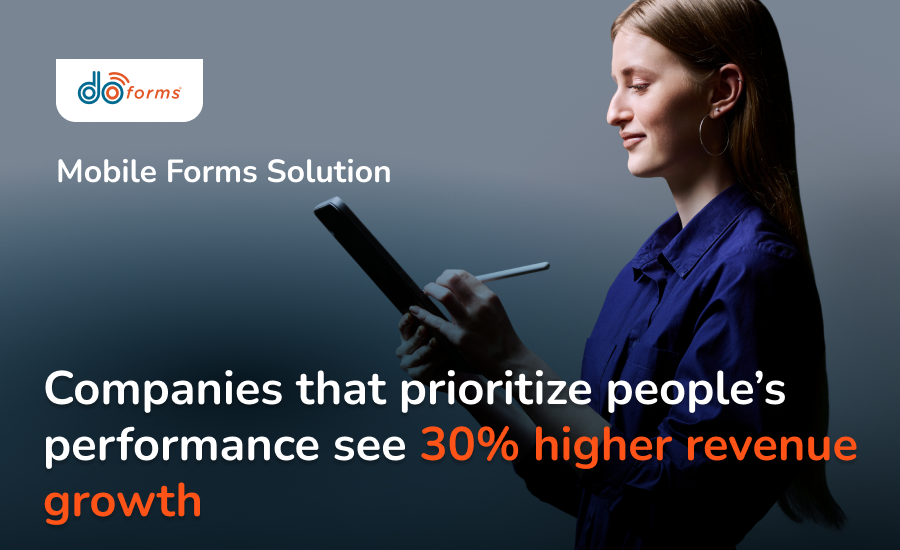
Intake Form: Key Takeaways
- A client intake form collects key details about new clients, helping align expectations and deliver better service
- Your form should include fields for contact details, service needs, budget, history and any legal or consent agreements relevant to your industry
- Depending on your business, you can use different types of intake forms, from medical and legal to consulting, real estate and field services
- Digital intake forms save time, reduce errors, enhance compliance and create a better client experience
About 86% of customers say good onboarding makes them more likely to stay loyal to a company.
An intake form is one of the simplest ways to enhance that smooth onboarding experience, ensuring you collect the right details from clients upfront.
In this blog, we’ll focus on:
- What a client intake form is
- Different types of intake forms across industries
- What to include to collect the right information
- The benefits of using digital intake forms
- Best practices to make your forms effective
Tired of chasing missing client details?
Create intake forms with doForms
Understanding Client Intake Forms
A client intake form is a document used to collect data about a new or prospective client.
It’s typically completed during the onboarding phase to help your business understand client needs and preferences, confirm your products or services are what they want and need, and align expectations before you start working.
Types Of Intake Forms
Although data collection forms look different, they serve the same purpose: delivering better and faster service.
Below are some common types of intake forms, and how different businesses use them.
Medical Intake Forms
Medical intake forms are common documents in clinics, hospitals and private healthcare facilities.
They collect patient history, insurance details, current medications, allergies and consent for treatment, reducing the risk of errors during care and ensuring patient safety.
Legal Client Intake Forms
Law firms and individual attorneys use legal intake forms to collect client case details, including:
- Case type, whether family law, civil litigation or immigration
- Previous legal representation
- Upcoming court dates
This information helps them assess the case, prepare a legal strategy and avoid duplicate or inaccurate filings.
Consulting Services Intake Forms
Business consultants, coaches and strategy firms use intake forms to understand the client’s goals and current challenges.
They focus on gathering information about revenue targets, operational bottlenecks and timelines, allowing experts to craft a personalized approach to each client’s project.
Creative Agency Or Freelancer Intake Forms
If you’re running a business that works with design, content creation or video production, you can use an intake form to gather information about project scope, branding guidelines and target audience.
That way, your final product will reflect the client’s vision and will feel on-brand from the start.
Home Services Intake Forms
If you’re managing a team of electricians, plumbers and HVAC technicians, your intake form can include fields with:
- Property address
- Job type needed: repair, installation, HVAC maintenance, plumbing or electric inspection
- Urgency level
- Preferred service dates
When techs know the job details ahead of time, they show up prepared, there are fewer return visits, and more is done in less time, boosting productivity.
You can also use the intake forms to document client approvals and safety compliance on-site.
Real Estate Intake Forms
Real estate and property management businesses also use intake forms. The completed forms tell them buyers’ and tenants’ preferred neighborhoods, budget ranges and desired home features.
Intake forms can also contain fields with maintenance history, lease status and HOA restrictions, allowing real estate professionals to narrow down listings and optimize showings.

No matter your field, intake forms help capture the right client details
What Information Does The Client Intake Form Gather?
A legal firm’s form will differ from that of a creative agency, and that’s how it should be. Tailor your questions to your field. Here are some common examples of what you can include:
- Contact details: Name, phone number, email and preferred communication method
- Demographics: Age, gender, company size and location
- Service needs: Type of service requested by the client, plus the timeline and key objectives
- Financial info: Budget range, preferred payment method and billing info
- History: Past projects or service history, how they heard about you, feedback on previous interactions with you or your competitors
- Legal: Signed consent forms, confidentiality agreements or disclaimers
Best Practices For Creating & Using Intake Forms
Creating an intake form properly is as important as using it the right way. To optimize the results, follow these best practices.
Keep It Short & Relevant
Long forms can confuse clients and lead to incomplete responses. Focus only on collecting the information you need at the beginning.
Use Standardized Questions
Implement checkboxes and required fields to avoid vague answers. Provide ranges to choose from rather than open text boxes, for example, $5k–$10k, $10k–$20k.
Use Digital Forms
Switch to digital intake forms to capture and share data instantly without the risk of losing information and making mistakes. This will help you speed up your project management workflow.
Integrate With Your Systems
Connect your intake forms with your CRM, scheduling platform or billing system so the data flows directly into your workflows and is always up to date.
Benefits Of Using Digital Intake Forms
A well-designed digital intake form simplifies your internal processes and ensures a better client experience.
Smooth Client Onboarding
No more back-and-forth emails, missed phone calls or scattered notes. With intake forms, you have all client information in one place.
Improved Accuracy
Structured fields, dropdown menus and pre-set questions ensure you have all key information available, without mistakes or incomplete submissions.
Time Saving
By gathering all essential details upfront, your team can retrieve data with a single click. Automated digital forms can even route information directly to your CRM or scheduling system, saving hours of admin work each week.
Better Client Experience
Organized and professional onboarding shows you value clients and take time to listen and understand their pain points, building trust from the very first interaction. Fast, efficient service based on data boosts loyalty and repeat business.
Enhanced Compliance
Intake forms help capture necessary consents, disclosures and signatures in industries like healthcare, law or finance, storing records automatically and ensuring you stay compliant with regulations.
Smarter Business Decisions
With digital intake forms, you can access collected data quickly and easily. Regular analysis helps identify common client needs so you can optimize your offerings.

Switching to digital intake forms is the first step toward simpler workflows
Need Intake Forms? Create Them With doForms
Modern mobile forms from doForms allow you to craft secure, mobile-friendly forms that adapt to your business needs.
You don’t need to start from scratch. Choose one of our templates and customize it to your industry, whether healthcare, law, real estate or field services.
Running a plumbing company? Grab a service intake template and tweak it to include property access or emergency options.
If you prefer doing your own form, use the intuitive drag-and-drop interface to add dropdown menus, checkboxes and signature fields, all of it without coding or specialized knowledge.
doForms provides more than easy intake form creation. Its use is simple: Your teams can complete intake forms directly on their mobile devices, even when offline. Once there’s an internet connection, data will be updated and synchronized.
Bonus: once a client submits a form, the info flows straight into your CRM or invoice system with no extra clicks needed.
DoForms protects sensitive client data by using encryption and secure storage. This is especially critical if you’re working with medical records or financial details.
Still using paper intake forms?
Switch to digital ones with doForms
Intake Form: FAQs
Can I automate intake forms?
Yes. With doForms, you can automate workflows by:
- Sending completed forms directly to the right department
- Triggering notifications for urgent requests
- Generating PDFs for clients automatically
How long should it take a client to fill out an intake form?
Intake forms should not take more than 3–5 minutes to complete. If your form is longer, break it into sections or use conditional logic to display only the questions that apply to the particular client.
How do I know if my intake form is effective?
An effective intake form:
- Is easy to use by clients
- Collects essential information
- Integrates smoothly into your workflows
Are intake forms secure?
With doForms, data is encrypted and stored securely. In addition, you can configure user access controls, which is especially useful for industries handling sensitive medical, financial or legal information.
Can intake forms improve internal communication?
Absolutely! Intake forms capture information in a standardized way, helping team members across departments see the same data. This reduces confusion and ensures sales, service and support teams are aligned from the start.
How often should I update my intake form?
Consider reviewing intake forms at least twice a year. You can do it sooner if your products or services change. Add or remove questions to keep the form relevant.
Do intake forms help with compliance?
Yes. They provide a structured way to capture required consents, disclosures and agreements. In addition, digital intake forms automatically generate audit trails that can be used during regulatory inspections.




